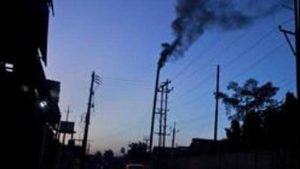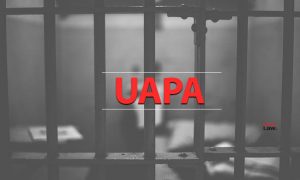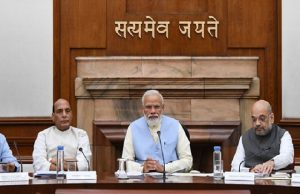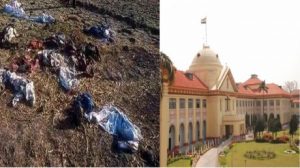Today Current Affairs: 15th July 2021 for UPSC IAS exams, State PSC exams, SSC CGL, State SSC, RRB, Railways, Banking Exam & IBPS, etc
Table of Contents
Amnesty Scheme For Infrastructure And Industrial Projects:

The union environment ministry has put together an amnesty scheme for infrastructure and industrial projects that have violated environmental clearance norms.
- The SOP is a result of orders from the National Green Tribunal, which earlier this year directed the ministry to put in place penalties and an SOP for green violations.
Standard operating procedure (SOP) laid out by the ministry:
- As per the new SOPs, projects that have expanded in capacity without requisite permissions will have to revert to older production limits until reassessed.
- If prior EC was not required for the project but is now required under updated norms, then the project will have to restrict its production to the extent to which prior EC was not required till appraised again.
- Only projects which are in complete violation of environmental norms and were never eligible for grant of environmental clearance shall be demolished or closed.
- Projects that violate norms, but are “permissible”, will be assessed for the damage caused and a remediation plan developed.
- These projects will have to submit a bank guarantee equivalent to the remediation plan and a natural and community resource augmentation plan to the central or state pollution control boards.
- The memorandum gives powers to government agencies such as the CPCB, state pollution control boards and state environment impact assessment authorities to identify such violations and take penal action against them.
Provisions in the draft EIA notification 2020:
- The draft notification includes an exemption of several large industries and projects from public consultation — as part of the environment impact assessment process — such as chemical manufacturing and petroleum products; building, construction and area development; inland waterways and expansion or widening of national highways.
- The draft does not provide clarification regarding the criteria for categorizing projects ‘strategic’ by the Central Government and hence could be open to excessively broad interpretations.
- There is a clause on “post-facto clearance”. These are for projects that have started without obtaining the required environmental clearances or permissions.
- It shortens the period of public consultation hearings to a maximum of 40 days.
- It reduces from 30 to 20 days the time provided for the public to submit their responses during a public hearing for any application seeking environmental clearance.
- The increased validity of the environment clearances for mining projects (50 years versus 30 years currently) and river valley projects (15 years versus 10 years currently) raises the risk of irreversible environmental, social and health consequences on account of the project remaining unnoticed for long.
Cabo Delgado:

The European Union has approved a Military Training Mission in Mozambique to support armed forces there to protect the civilian population.
- It aims to train and support the military in restoring security to northern Cabo Delgado, which has been plagued by extreme violence amid Jihadist attacks since 2017.
- Over the last three years, more than 2,800 people have died in the violence which has forced about 9,00,000 others from their homes.
- Cabo Delgado is the northernmost province of Mozambique.
- As well as bordering the neighbouring country of Tanzania, it borders the provinces of Nampula and Niassa.
- The region is an ethnic stronghold of the Makonde tribe, with the Makua and Mwani as leading ethnic minorities.
Unlawful Activities (Prevention) Act (UAPA):

The death of Father Stan Swamy, a Jesuit priest and tribal rights activist, while in judicial custody, has brought the stringent provisions of Unlawful Activities (Prevention) Act (UAPA) into the focus.
- UAPA is the India’s main anti-terrorism legislation, but the law makes it more difficult to obtain bail.
- This difficulty in obtaining bail is being seen as one of the principal reasons for Fr. Swamy’s death as a prisoner in a hospital and compromises constitutional liberties.
- In the mid-1960s, in order to curb the various secession movements, the Government of India considered enacting a stringent law.
- In March 1967, a peasant uprising in Naxalbari imparted a sense of urgency.
- On 17th June, 1966, the President had promulgated the Unlawful Activities (Prevention) Ordinance.
- The ordinance intended to “provide for the more effective prevention of unlawful activities of individuals and associations”.
- After initial resistance from the Parliament (owing to its stringent nature), the Unlawful Activities (Prevention) Act was passed in 1967.
- The Act provided for declaring an association or a body of individuals “unlawful” if they indulged in any activity that envisages secession or questions or disclaims the country’s sovereignty and territorial integrity.
- Prior to the UAPA’s enactment, associations were being declared unlawful under the Criminal Law (Amendment) Act, 1952.
- However, the Supreme Court held that the provision on bans was unlawful because there was no judicial mechanism to scrutinise the validity of any ban.
- Therefore, the UAPA included provisions for a Tribunal which has to confirm within six months the notification declaring an outfit unlawful.
- After the Prevention of Terrorism Act (POTA), 2002, was repealed, the UAPA was expanded to include what would have been terrorist acts in earlier laws.
Current Status of the Act:
- In its present form, the UAPA has been amended in 2004 and 2013, to expand its scope.
- Expanded Scope of Law:
- Punishment for terrorist acts and activities,
- Acts threatening the country’s security, including its economic security (a term that covers fiscal and monetary security, food, livelihood, energy ecological and environmental security),
- Provisions to prevent the use of funds for terrorist purposes, including money.
- The ban on organisations was initially for two years, but from 2013, the period of proscription has been extended to five years.
- Further, the amendments aim to give effect to various anti-terrorism resolutions of the United Nations Security Council and requirements of the Financial Action Task Force.
- In 2019, the Act was amended to empower the government to designate individuals as terrorists.
Cabinet Committees:

After a large-scale rejig at the Council of Ministers, Prime Minister effected some changes in Cabinet committees.
Eight Cabinet Committees:
- Appointments Committee of the Cabinet.
- Cabinet Committee on Accommodation.
- Cabinet Committee on Economic Affairs.
- Cabinet Committee on Parliamentary Affairs.
- Cabinet Committee on Political Affairs.
- Cabinet Committee on Security.
- Cabinet Committee on Investment and Growth.
- Cabinet Committee on Employment & Skill Development.
All committees except Cabinet Committee on Accommodation and Cabinet Committee on Parliamentary Affairs are headed by the Prime Minister.
- They are extra-constitutional in emergence.
- In other words, they are not mentioned in the Constitution. However, the Rules of Business provide for their establishment.
- The executive in India works under the Government of India Transaction of Business Rules, 1961.
- These Rules emerge from Article 77(3) of the Constitution, which states: “The President shall make rules for the more convenient transaction of the business of the Government of India, and for the allocation among Ministers of the said business.”
- The Prime Minister constitutes Standing Committees of the Cabinet and sets out the specific functions assigned to them.
- He can add or reduce the number of committees.
- In addition to cabinet committees, several Groups of Ministers (GoMs) are constituted to look into different issues/subjects.
Post-2020 Global Biodiversity Framework:

The United Nations Convention on Biological Diversity (CBD) has demanded an additional $200 billion fund flow to developing countries from various sources to manage nature through 2030.
- It is one of many demands and targets that have been set through 2030 in the official draft of a new Global Biodiversity Framework.
Convention on Biological Diversity (CBD)
- The Convention on Biological Diversity (CBD), a legally binding treaty to conserve biodiversity has been in force since 1993.
- Biodiversity, and the benefits it provides, is fundamental to human well-being and a healthy planet. Despite ongoing efforts, biodiversity is deteriorating worldwide and this decline is projected to continue or worsen under business-as-usual scenarios.
- The post-2020 global biodiversity framework builds on the Strategic Plan for Biodiversity 2011-2020.
- As the United Nations Decade on Biodiversity 2011-2020 comes to an end, IUCN actively supports the development of what needs to be an ambitious new global biodiversity framework.
- The new frameworks have four goals to achieve by 2050.
- To halt the extinction and decline of biodiversity.
- To enhance and retain nature’s services to humans by conserving.
- To ensure fair and equitable benefits to all from use of genetic resources.
- To close the gap between available financial and other means of implementation and those necessary to achieve the 2050 Vision.
- 2030 Action Targets: The framework has 21 action-oriented targets for urgent action over the decade to 2030, which includes:
- To bring at least 30% of land and sea under the world’s protected areas.
- A 50% greater reduction in the rate of introduction of invasive alien species, and controls or eradication of such species to eliminate or reduce their impacts.
- Reducing nutrients lost to the environment by at least half, and pesticides by at least two thirds, and eliminating the discharge of plastic waste.
- Nature-based contributions to global climate change mitigation efforts of at least 10 GtCO2e (gigatonnes of equivalent carbon dioxide) per year, and that all mitigation and adaptation efforts avoid negative impacts on biodiversity.
- Redirecting, repurposing, reforming or eliminating incentives harmful for biodiversity, in a just and equitable way, reducing them by at least $US 500 billion per year.
Suborbita Flight:

A six person crew on Virgin Galactic’s VSS Unity spaceship undertook a brief trip to the “edge of space” which is known as Suborbital Flight.
- Sirisha Bandla, an astronaut born in India, was a part of the crew.
- She was the third woman of Indian origin to go to space after Kalpana Chawla and Sunita Williams.
- Virgin Galactic is a British-American spaceflight company, operating in the United States.
Suborbital Flight:
- When an object travels at a horizontal speed of about 28,000 km/hr or more, it goes into orbit once it is above the atmosphere.
- The satellites need to reach that threshold speed (orbital velocity) in order to orbit Earth.
- Such a satellite would be accelerating towards the Earth due to gravity, but its horizontal movement is fast enough to offset the downward motion so that it moves along a circular path.
- Any object travelling slower than 28,000 km/hr must eventually return to Earth.
- Any object that launches to space but does reach sufficient horizontal velocity to stay in space falls back to Earth. Hence they fly in a suborbital trajectory.
- It means that while these vehicles will cross the ill-defined boundary of space, they will not be going fast enough to stay in space once they get there.
Country’s First Green Hydrogen Mobility Project:

REL, a 100% subsidiary of NTPC, signed a MoU with Union Territory of Ladakh and the Ladakh Autonomous Hill Development Council (LAHDC) to setup the country’s first Green Hydrogen Mobility project.
- The signing of the MoU was also marked with the inauguration of NTPC’s first solar installations in Leh in form of solar trees and a solar car port.
- The MoU will enable NTPC to help Ladakh develop a carbon free economy based on renewable sources and green hydrogen.
- This is also in line with the Prime Minister’s vision of a ‘carbon neutral’ Ladakh.
Karman Line:

On July 11, British businessman Richard Branson beat rival Jeff Bezos to reach the edge of space, giving space tourism an official kickstart. But experts and space enthusiasts are in doubt whether the height to which he travelled can be termed ‘space’.
- The most widely accepted boundary of space is known as the Kármán line, 100km above mean sea level. But the United States uses 80km as the cutoff point. Branson’s Virgin Galactic flight reached a height of 86km while Jeff Bezos’ Blue Origin flight is expected to go about 106km high.
- The Kármán line has been compared to international waters, as there are no national boundaries and human laws in force beyond the line. Above this level, there would be free space.
- It was named after aerospace pioneer Theodore von Kármán
- The 1967 Outer Space Treaty says that space should be accessible to all countries and can be freely and scientifically investigated.
- Defining a legal boundary of what and where space is can help avoid disputes and keep track of space activities and human space travel.
- The Earth’s atmosphere has been divided into various layers, with the troposphere starting at the Earth’s surface and extending about 14.5 km high, stratosphere extending to 50 km, mesosphere to 85 km, thermosphere to 600 kilometers and exosphere to 10,000 km.
Senari Massacre Of 1999:

The Supreme Court on Monday (July 12) agreed to hear the Bihar government’s appeal against the acquittal by Patna High Court in May of 14 accused in the Senari massacre of 1999.
Senari massacre of 1999:
- On March 18, 1999, 34 upper caste men were forced out of their homes in Senari village of Jehanabad district allegedly by cadres of the now defunct Maoist Communist Centre (MCC), and slaughtered near the village temple.
- The massacre was a sequel in the prolonged caste war between the MCC and private armies of upper caste villagers, especially the Ranbir Sena led by Barmeshwar Mukhiya, who was jailed in 2012.
- On November 15, 2016, a Jehanabad court sentenced 11 accused to death, and awarded the life sentence to three others. Three of those convicted challenged the verdict in the High Court.
- The Senari massacre saw the killing of the largest number of upper caste victims (34) after the Dalelchak-Bhagora massacre of Aurangabad in 1987, in which 42 upper caste people including 21 of a single family were killed.
- On the other side, the biggest loss of lives came in the Laxmanpur-Bathe massacre of Jehanabad in 1997, in which 58 Dalits and OBCs were killed by the Ranbir Sena.
Retail Direct Gilt (RDG) Account:

RBI announces RDG account for hassle-free trading in govt bonds for retail investors.
- The Reserve Bank of India (RBI) said that retail investors can open an account with the central bank to start trading in government bonds.
- The online portal for retail investors will provide access to the bond trading platform available to institutional investors as well, and retail investors can also bid for bonds in primary auctions like larger institutions.
- The starting date for the Retail Direct Gilt (RDG) account is yet to be announced by the RBI, but other modalities have been spelt out.
- Both resident Indian retail investors and non-resident retail investors will be eligible to invest in Government securities.
- The RDG account can be opened singly or jointly with any other retail investor who fulfills the eligibility criteria.
- The same account will be valid for bidding in primary auctions as well as secondary market trading in Negotiated Dealing System – Order Matching (NDS-OM).
Two Species Of Few-Electron Bubbles (FEBs) In Superfluid Helium Gas:

Scientists at the Indian Institute of Science (IISc), Banglore for the first time discovered two species of Few-Electron Bubbles (FEBs) in Superfluid Helium Gas.
- An electron bubble is the empty space created around a free electron in a cryogenic gas or liquid, such as neon or helium.
- They are typically very small, about 2 nm in diameter at atmospheric pressure.
- An electron injected into a superfluid form of helium creates a Single Electron Bubble (SEB) — a cavity that is free of helium atoms and contains only the electron. The shape of the bubble depends on the energy state of the electron.
- For instance, the bubble is spherical when the electron is in the ground state (i.e. state of lowest energy).
- There are also multiple electron bubbles that contain thousands of electrons.
- Superfluidity is the frictionless flow and other exotic behaviour observed in liquid helium at temperatures near absolute zero (−273.15 °C), and similar frictionless behaviour of electrons in a superconducting solid. In each case the unusual behaviour arises from quantum mechanical effects.
Few-Electron Bubbles:
- FEBs, on the other hand, are nanometre-sized cavities in liquid helium containing just a handful of free electrons.
- The number, state, and interactions between free electrons dictate the physical and chemical properties of materials.
- FEBs form an interesting system that has both electron-electron interaction and electron-surface interaction.
- FEBs were found to be stable for at least 15 milliseconds (quantum changes typically happen at much shorter time scales) which would enable researchers to trap and study them.
BHIM–UPI In Bhutan.:

Union Minister of Finance along with her counterpart, the Finance Minister of Bhutan, Mr Lyonpo Namgay Tshering, jointly launched BHIM–UPI in Bhutan.
- This launch fulfils the commitment made by the two countries during the Prime Minister of India’s State visit to Bhutan in 2019.
- Following that visit, India and Bhutan have already enabled inter-operability in acceptance of Rupay cards in each other’s countries in two phases – acceptance of Rupay cards issued in India at Bhutan based terminals in the first phase, and vice versa in the second phase.
- With launch of BHIM-UPI in Bhutan, the payment infrastructures of the two countries are seamlessly connected and will benefit a large number of tourists and businessmen from India who travel to Bhutan each year.
- Bhutan is the first country to adopt UPI standards for its QR deployment, and the first country in our immediate neighbourhood to accept mobile based payments through the BHIM App.




